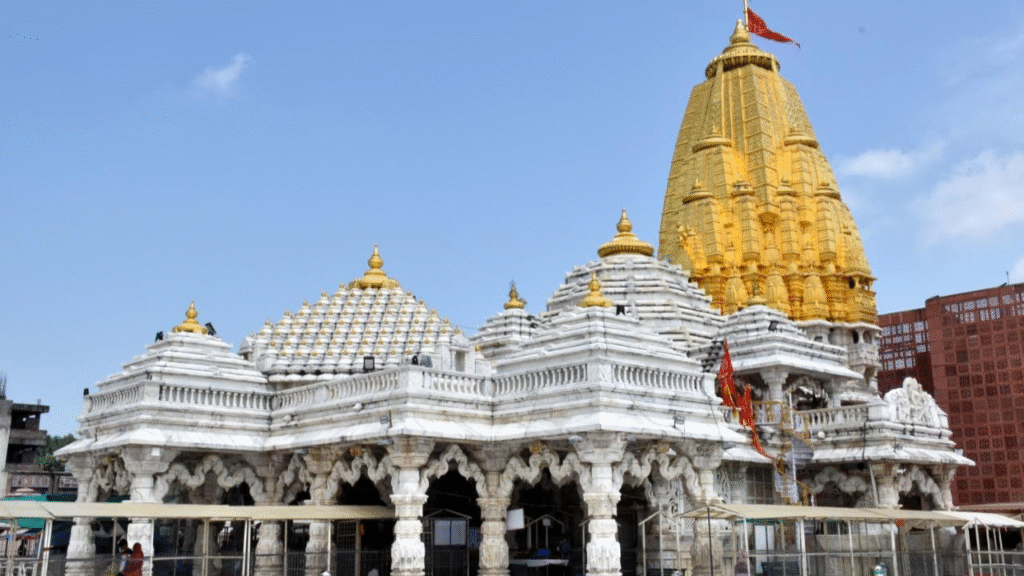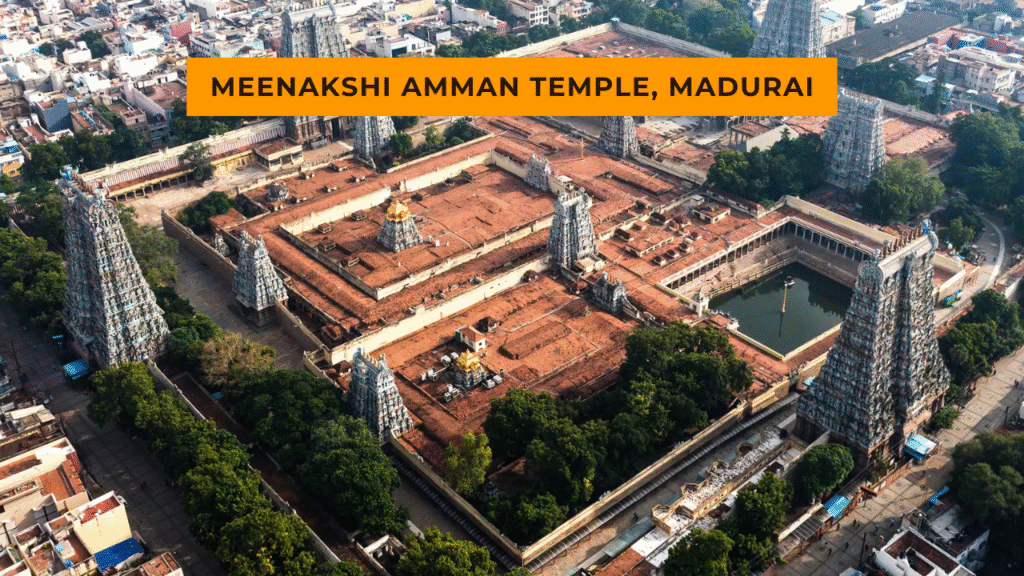Ambaji Temple, located in the Banaskantha district of Gujarat, is one of the most sacred and revered pilgrimage sites for devotees of Goddess Durga. As one of the 51 Shakti Peethas in India, the temple draws millions of pilgrims every year who come to seek blessings from Goddess Amba, a powerful embodiment of Shakti or divine feminine energy. Nestled near the Aravalli hills and close to the Gujarat-Rajasthan border, the temple’s divine atmosphere and spiritual significance make it a must-visit for devotees and tourists alike.
| Temple Name | Ambaji Temple |
| Location | Banaskantha district, Gujarat, India |
| Deity Worshipped | Goddess Amba (form of Shakti) |
| Special Feature | No idol; worship of sacred Shree Yantra |
| Significance | One of the 51 Shakti Peethas; heart of Goddess Sati believed to have fallen here |
| Major Festivals | Navratri, Bhadarvi Poonam, Sharad Purnima |
| Unique Rituals | Pad Yatra, Kumkum Archana, Navchandi Yagna, Chandipath |
| Architecture | White marble structure with golden Kalash, carvings from Hindu scriptures |
| Darshan Timings | Daily: 7:00 AM to 8:30 PM |
| Nearby Attractions | Gabbar Hill, Kailash Tekari, Kamakshi Mandir, Koteshwar Mahadev Temple |
| How to Reach | Nearest railway: Abu Road (20 km); Airport: Ahmedabad (180 km) |
| Accommodation | Dharamshalas, hotels, temple guest houses available |
| Food | Vegetarian meals, local Gujarati thali available nearby |
| Spiritual Belief | Fulfills wishes, removes doshas, grants peace, prosperity, and strength |
The Divine Origin of Ambaji Temple
According to legend, the Ambaji Temple is the sacred spot where the heart of Goddess Sati fell after her body was dismembered by Lord Vishnu’s Sudarshan Chakra. This event marked the emergence of Shakti Peethas—spiritual epicenters of feminine energy spread across the Indian subcontinent. Unlike many temples, Ambaji does not contain any idol or statue. Instead, the main focus of worship is a sacred Shree Yantra, carved on a flat stone that symbolizes the goddess in her cosmic form.
Spiritual Significance
Ambaji Temple is not just an architectural structure; it represents centuries of unwavering devotion. It is believed that worshipping at Ambaji fulfills one’s desires and brings inner strength, prosperity, and protection. The temple is especially important during Navratri, when thousands of devotees participate in Garba, a traditional dance form that celebrates the divine feminine.
People believe that the power of Shree Yantra, worshipped here, helps cleanse the soul and purify one’s karma. Many also perform special rituals to remove doshas, overcome hardships, or find peace in their personal and professional lives.
Temple Architecture and Design
The Ambaji Temple boasts exquisite white marble architecture, intricate carvings, and a golden Kalash atop the sanctum that reflects divine energy. The temple’s walls are adorned with scenes from various scriptures, while the inner sanctum exudes a calm and mystical aura. The Garbhagriha, or sanctum sanctorum, is kept dark to focus the attention of devotees solely on the Shree Yantra. Traditional lamps and incense enhance the sacred ambiance.
The temple complex also features smaller shrines, resting areas, and facilities for pilgrims. An 88-step staircase behind the temple leads to the Kailash Hill, which offers a panoramic view of the surrounding area and holds spiritual significance.
Major Festivals and Events
The Ambaji Temple comes alive during festivals, especially during Navratri, Bhadarvi Poonam, and Sharad Purnima. Bhadarvi Poonam is the largest fair associated with Ambaji, attracting over a million devotees from Gujarat, Rajasthan, Maharashtra, and Madhya Pradesh. During these festivals, devotees undertake the ‘Pad Yatra’, walking barefoot to the temple as an offering of devotion.
During Navratri, the temple becomes a hub of cultural and spiritual activities. Special aartis, havans, and Garba performances transform the temple into a divine celebration ground where devotion meets tradition.
Rituals and Offerings
Devotees begin their visit with a holy bath at the Mansarovar Kund, situated near the temple. The water of the pond is considered sacred and purifying. After the cleansing ritual, they proceed to offer coconuts, sarees, bangles, and red chunaris to the goddess. The temple priests perform Aartis and Chandipath, and many devotees also undertake Parikrama (circumambulation) of the hill for spiritual merit.
Some special pujas include Kumkum Archana, Navchandi Yagna, and Durga Saptashati Paath, all believed to invoke the powerful blessings of Maa Amba.
Ambaji Temple Timings Table
| Day | Temple Opening Time | Temple Closing Time |
|---|---|---|
| Monday | 7:00 AM | 8:30 PM |
| Tuesday | 7:00 AM | 8:30 PM |
| Wednesday | 7:00 AM | 8:30 PM |
| Thursday | 7:00 AM | 8:30 PM |
| Friday | 7:00 AM | 8:30 PM |
| Saturday | 7:00 AM | 8:30 PM |
| Sunday | 7:00 AM | 8:30 PM |
Note: On special occasions and during festivals, the temple remains open longer for darshan and rituals.
How to Reach Ambaji Temple
Ambaji is well-connected by road, rail, and air. The nearest railway station is Abu Road, just 20 km away. From there, local taxis and buses are available to reach the temple. The nearest airport is Ahmedabad International Airport, approximately 180 km away. State transport buses and private vehicles frequently ply between Ahmedabad and Ambaji.
Well-maintained roads and scenic landscapes make the drive to the temple a serene and spiritual experience. Pilgrims also enjoy walking long distances as an act of faith and dedication.
Nearby Attractions
While visiting Ambaji, tourists can also explore nearby attractions such as:
- Gabbar Hill, considered the original seat of the goddess
- Kailash Tekari, offering panoramic views and a meditative environment
- Kamakshi Mandir, a newer addition near the temple
- Koteshwar Mahadev Temple, located on the banks of Saraswati River
These places further enrich the spiritual journey and offer moments of reflection and inner peace.
Where to Stay and Eat
Ambaji offers a wide range of accommodation options, including dharamshalas, budget lodges, and mid-range hotels. The temple trust also maintains guesthouses for pilgrims. Basic vegetarian food is available at nearby restaurants and eateries. Most visitors enjoy the local Gujarati thali, which is both nourishing and delicious.



